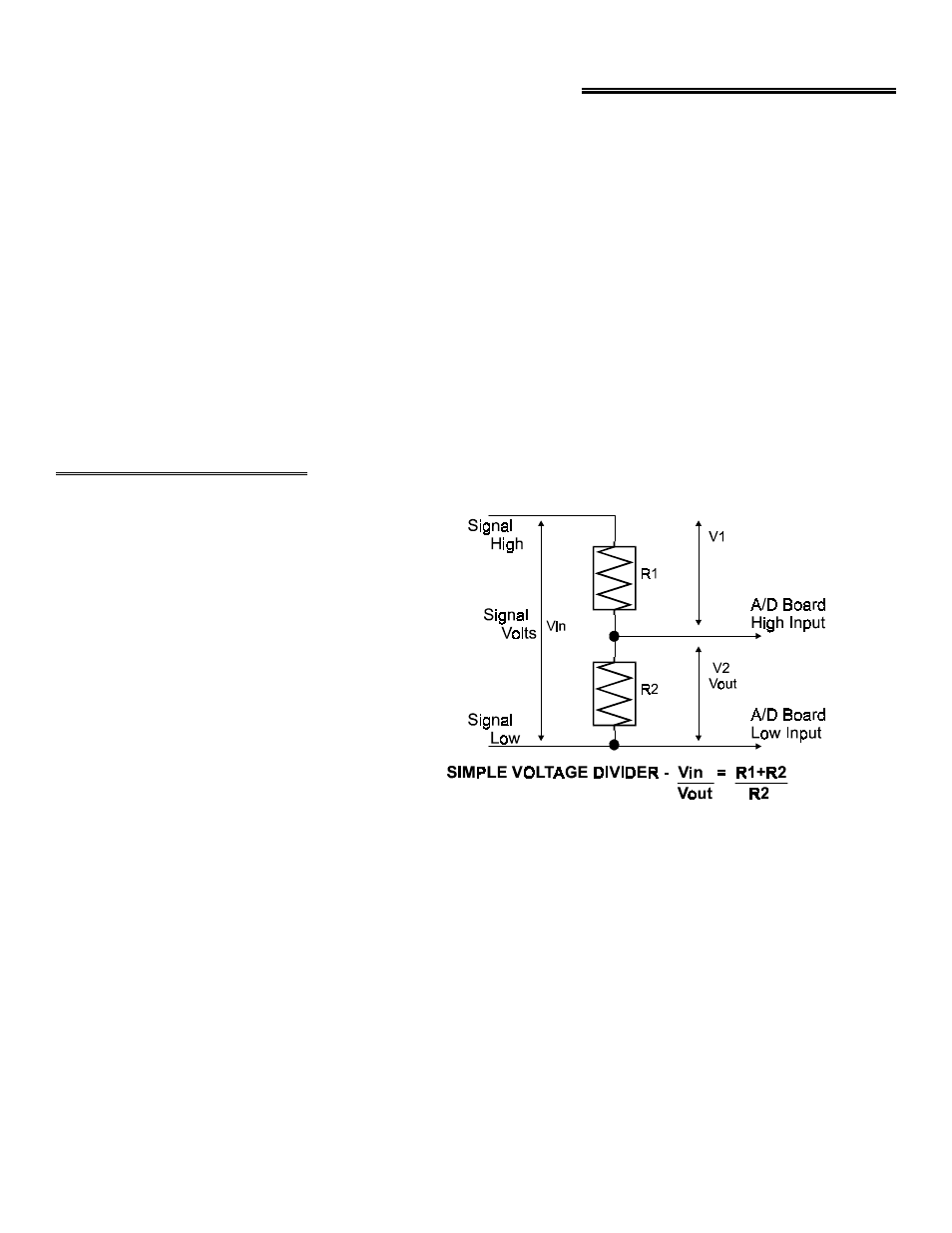6 analog electronics, 1 voltage dividers – Measurement Computing CIO-DAS16/330 User Manual
Page 25

6 ANALOG ELECTRONICS
This short introduction to the analog electronics most often needed by data acquisition board users covers a few key
concepts. They are:
O Voltage dividers.
O Differential vs. Single Ended Inputs.
O Isolation vs. Common Mode Range
O Low pass filters for analog and digital inputs.
O A/D Resolution
O Conversion to Engineering units.
O 4-20 mA inputs
O Noise; sources and solutions.
Each deals with the impact on measurements made with data acquisition boards.
6.1 VOLTAGE DIVIDERS
If you wish to measure a signal which varies over a
range greater than the input range of an analog or
digital input, a voltage divider can drop the voltage
of the input signal to the level the analog or digital
input can measure (Figure 6-1).
A voltage divider takes advantage of Ohm's law,
which states,
Voltage = Current * Resistance
and Kirkoff's voltage law which states,
The sum of the voltage drops
around a circuit will be equal to the
voltage drop for the entire circuit.
Figure 6-1. Voltage Divider
Implied in the above is that any variation in the voltage drop for the circuit as a whole will have a proportional variation
in all the voltage drops in the circuit.
A voltage divider takes advantage of the fact that the voltage across one of the resistors in a circuit is proportional to the
voltage across the total resistance in the circuit.
The trick to using a voltage divider is to choose two resistors with the proper proportions relative to the full scale of the
analog or digital input and the maximum signal voltage.
The phenomena of dropping the voltage proportionally is often called attenuation.
21
